Enemy hackers pose a serious threat to military drones. Northeastern has new facility to test ways to stop them.
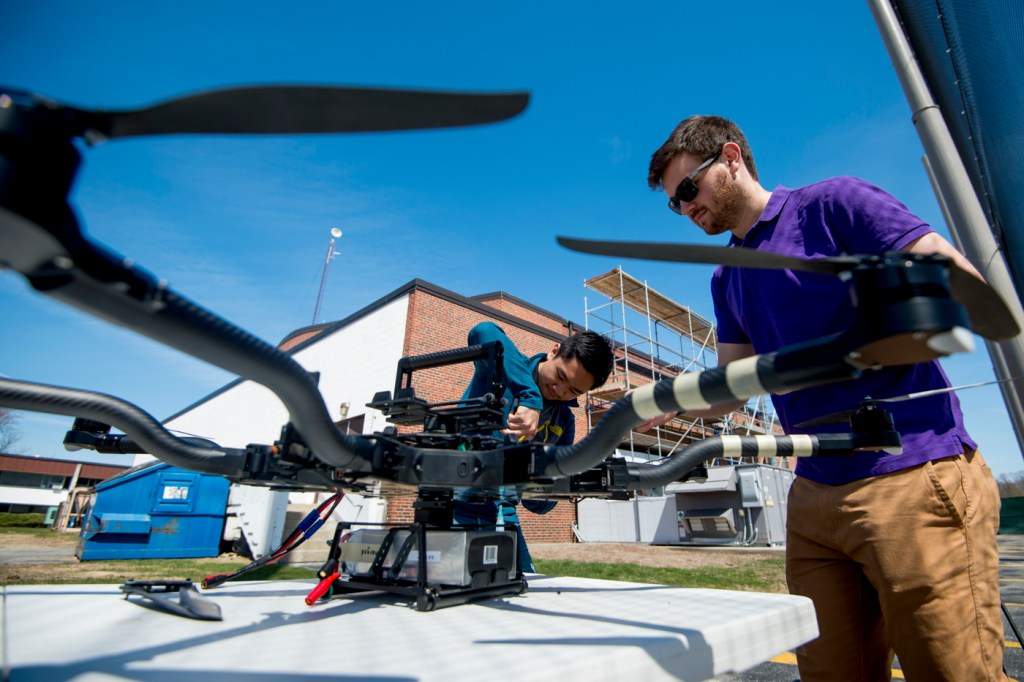
As cyberattacks become an increasing security threat to unmanned aircraft systems, military planners are seeking ways to protect them from enemy threats. Northeastern now offers one of the few facilities in Massachusetts to test drones against wireless signal jamming, spoofing, and other enemy interference techniques.
On Tuesday, Northeastern’s brand-new flight facility for unmanned autonomous systems was put to use for the first time with the launch of an octocopter drone. Because the netted enclosure at the George J. Kostas Research Institute for Homeland Security in Burlington, Massachusetts is considered equivalent to an indoor flight facility, researchers will be able to test drones safely without being limited by Federal Aviation Administration restrictions.
The drone cage—which stands more than five stories tall and is 150 feet wide by 200 feet long—is large enough for two research groups to fly different drones simultaneously. This is a major upgrade from the empty classrooms researchers had to rely on for flight tests before the enclosure was built, said Matthew T. Kling, senior research engineer and scientist at the Kostas Research Institute.
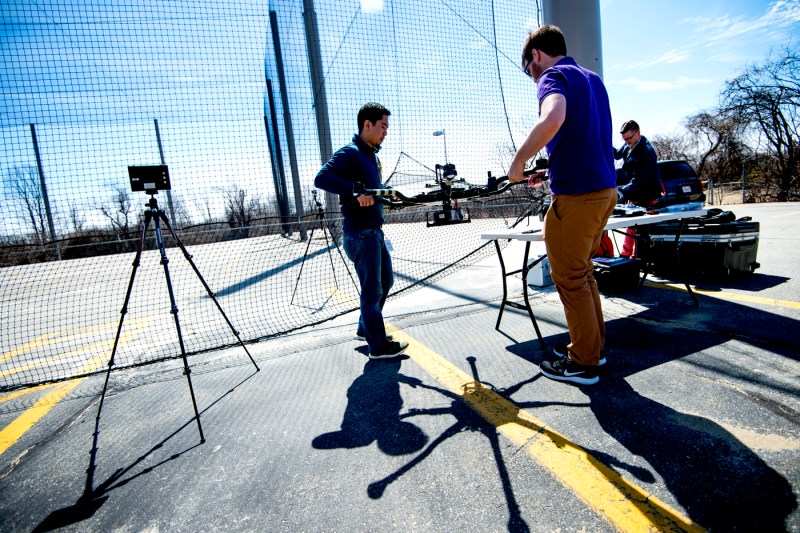
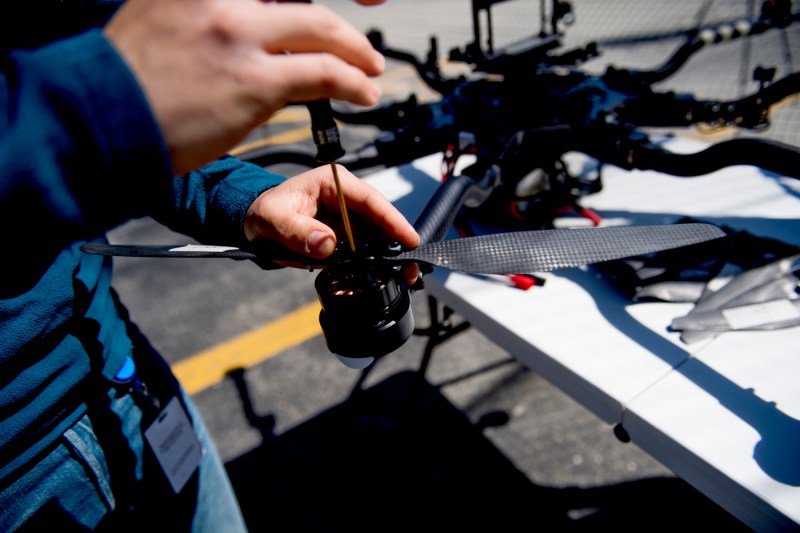
Kling said the facility will also include a “one-of-a-kind, state-of-the-art” indoor space, which will house a custom-built anechoic chamber—a room designed to completely absorb electromagnetic waves. This is an unusual facility in that it allows researchers to create “an arbitrary wireless environment,” and it’s large enough to fly drones within the chamber itself. The indoor space is currently under construction and will be complete by fall 2018.
Researchers will be able to use the chamber to simulate hostile environments the military might face, Kling said. For example, a drone flying into enemy territory might be attacked by way of wireless interference. At the new facility, researchers will be able to deliberately attack their own drones, safely and accurately simulating enemy threats. Then, they can develop countermeasures to defend against those attacks.
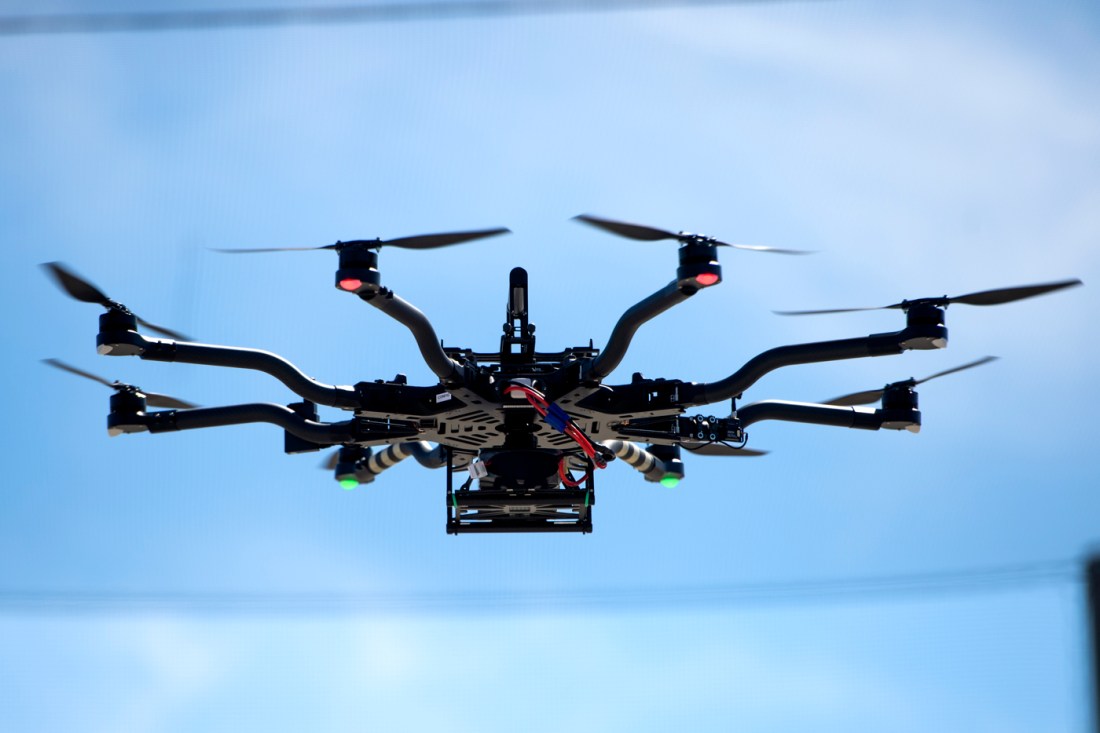
There will also be a netted corridor connecting the indoor and outdoor areas when the site is fully complete. This will allow drones to navigate from one environment to the other, so researchers can test different flight control and sensor mechanisms, Kling said.
Netted cages of this size are very hard to come by—particularly in this area—and places to fly prototypes in general are really hard to come by. All of the capabilities combined make it a very appealing location.
Andrew Musto, Project manager at Defense Innovation Unit Experimental
On Tuesday, Aurora Flight Sciences, a company based in Cambridge, Massachusetts, launched its octocopter drone for the first flight at the new outdoor facility. Aurora is a company within the project portfolio of Defense Innovation Unit Experimental, an organization within the Department of Defense.
“Netted cages of this size are very hard to come by—particularly in this area—and places to fly prototypes in general are really hard to come by,” said Andrew Musto, a project manager at Defense Innovation Unit Experimental. “All of the capabilities combined make it a very appealing location.”
Several labs at Northeastern are ready to test drones at the new site. For example, Jerome Hajjar, CDM Smith Professor and chair of the Department of Civil and Environmental Engineering at Northeastern, directs the STReSS Lab at the Kostas Research Institute. He is working with Taskin Padir, associate professor of electrical and computer engineering, to develop unmanned autonomous systems to test the safety of buildings, bridges, and other structures. Their vision is a swarm of drones that work cooperatively together to assess damage after disasters.
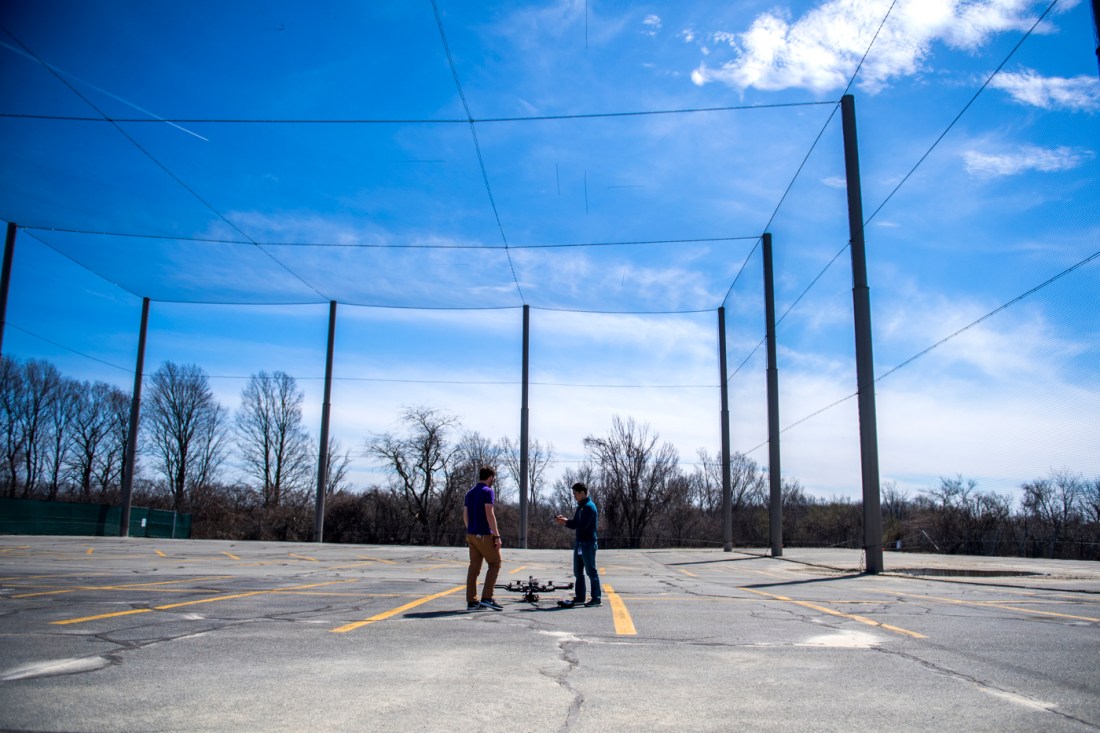
The new facility is a tangible example of the mission at Kostas Research Institute, Kling said.
“It’s bringing together government, commercial industry and academia to work on solving really tough problems.”





